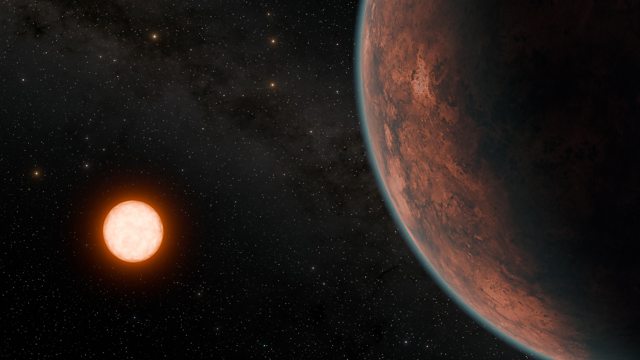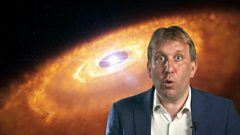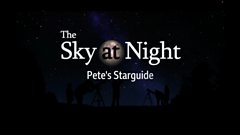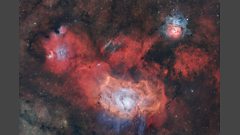Exoplanets - Strange New Worlds
The team explore one of the newest areas of modern astronomy, the search for exoplanets, the distant worlds that orbit stars beyond our own solar system.
The team go on a cosmic adventure, exploring one of the newest areas of modern astronomy – the search for exoplanets, the distant bodies that orbit stars beyond our own solar system. These strange new worlds are transforming our understanding of how planets form, where we can look for potentially habitable ones and just how unique, or not, our own Earth may be.
This captivating new field intrigued presenter George Dransfield so much that she left her secure teaching job to go back to university to study for a PhD, and so she was thrilled by the opportunity to travel to Germany, where ESA’s Plato spacecraft is being built. This cutting-edge mission will study exoplanets like never before. Dubbed 'the planet hunter', Plato will use its 26 cameras to scan over 2,000 sun-like stars to search for rocky Earth-like planets. With each camera capturing 81.4-megapixel images, the resulting two-billion-pixel overall view will be the largest ever for a space mission. George meets ESA’s Thomas Walloschek and OHB’s Pablo Jorba Coloma, to talk about the engineering challenges they have overcome, before going to see the space craft in the clean room where it is being built.
Back in the UK, Chris Lintott takes us on a quick tour through 30 years of exoplanet discovery and shares a possibly endless list of the strange new worlds that have been found. He also meets Dr Edward Bryant, from the University of Warwick, whose recent discovery of planet TOI-6894 b was published in June. This Saturn-sized gas giant, orbiting a tiny red dwarf star, defies current models of planet formation and raises new questions about how such massive planets can form around such small stars. Could our models be missing something fundamental?
Meanwhile, Maggie Aderin-Pocock explains the mystery of the exoplanet Radius Valley - with the help of some sweets, of course! She then speaks to Larissa Palethorpe, whose PhD research in this area led to the discovery of Gliese 12 b, the closest Earth-sized planet in the habitable zone found to date.
As ever, Pete Lawrence is on hand with practical stargazing tips for the summer months, including how to spot and photograph the 'moon illusion' - an optical trick that makes the moon appear unusually large when it’s near the horizon. With the moon sitting low in the sky during this phase of its 18.6-year cycle, it’s the perfect time to try capturing this stunning effect.
Finally, we conclude this episode with a celebration of Chris Lintott’s 25 years since his first appearance on the programme.
The strange new worlds being uncovered through exoplanet research offer a rich and thought-provoking glimpse into the incredible diversity of planets across the universe and prompt us to consider just how rare, or common, our place in it might be, and this programme takes you on a journey to explore them from the comfort of your own sofa!
Last on
More episodes
Next
Clips
-
![]()
Exoplanets - It's Finally Happening!
Duration: 01:00
-
![]()
The Exoplanet Zoo
Duration: 00:32
-
![]()
Maggie's Mysterious Exoplanet Sweets
Duration: 01:36
-
![]()
Starguide: July 2025
Duration: 04:41
Credits
| Role | Contributor |
|---|---|
| Presenter | Maggie Aderin-Pocock |
| Presenter | Chris Lintott |
| Presenter | Pete Lawrence |
| Presenter | George Dransfield |
| Executive Producer | Eileen Inkson |
| Series Producer | Amena Hasan |
| Production Manager | Sam Breslin |
Broadcasts
- Mon 14 Jul 2025 22:00
- Thu 17 Jul 2025 00:15
Join our photo group
Share images, inspiration and tips with fellow photographers






